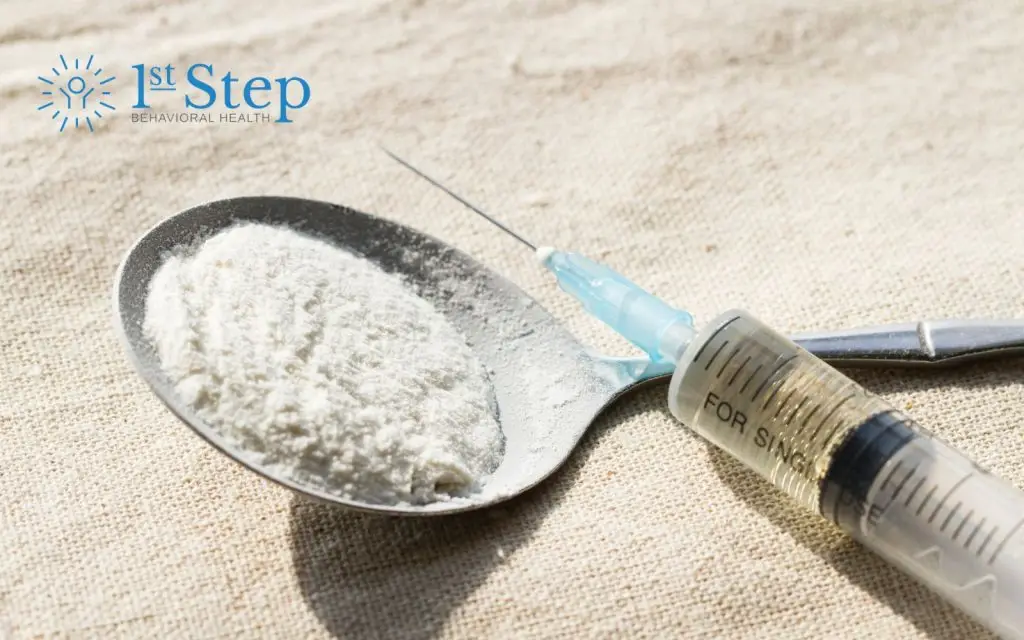Crack cocaine is a powerful and highly addictive drug that continues to devastate individuals, families, and communities. For those concerned about a loved one or struggling with drug abuse themselves, one of the first steps toward understanding and recovery is learning how to identify crack and its use. This guide answers the critical question: What does crack look like?
Whether you are a parent, a partner, a friend, or someone facing substance use firsthand, this article will help you recognize crack cocaine. It will give you the tools to recognize the signs of crack addiction and how to seek professional support.
What Is Crack Cocaine?
Crack is a solid form of cocaine that is typically smoked rather than snorted. It is created by mixing powdered cocaine with chemicals and water, then heating the mixture until it hardens into small chunks or “rocks.” This simple conversion process transforms powdered cocaine into a form that produces a faster and more intense high when inhaled.
Crack is a Schedule II drug, meaning it has a high potential for abuse and dependence and limited medical use. It stimulates the brain’s reward system, flooding it with dopamine and creating an intense feeling of euphoria. This rapid onset of pleasure is what makes crack cocaine use so dangerously addictive.
What Does Crack Look Like?
One of the most commonly asked questions is: What does crack cocaine look like?
Crack typically appears as small, irregularly shaped rocks or crystals. These crack rocks range in color from off white to gray, pale yellow, or beige. The texture of crack is brittle and crumbly like chalk. The pieces can be as small as a pebble or as large as a marble.
Unlike powdered cocaine, which is fine and white, crack has a solid form and a rock-like appearance. This visual difference makes it easier to identify crack cocaine compared to other drugs.
Physical characteristics of crack cocaine include:
- Rock-like chunks
- Off white, pale yellow, or slightly gray
- Crumbly, brittle texture
- Often found in small baggies, foil, or vials
If you find crack cocaine, it is likely a sign someone near you is abusing it. Contact the First Step Behavioral Health specialists to learn more about treating substance use disorder and addiction.
What Does Crack Smell Like?
Another way to identify crack is through its distinct odor. Heating the drug produces a sharp, chemical scent similar to burning rubber or plastic. Some users also describe the crack cocaine smell as similar to motor oil or an electrical fire.
This distinct smell lingers on clothing, in rooms, and on common crack paraphernalia, such as glass pipes, aluminum foil, and soda cans.
If you’ve noticed a strong chemical or burning odor that won’t go away, especially near areas where someone has been alone for a while, it may be a sign of crack use.
How Do People Use Crack?
People usually smoke crack using a pipe. This method of ingestion delivers the drug quickly into the bloodstream through the lungs. The effects are almost immediate, with a rapid onset of intense euphoria lasting only 5 to 15 minutes.
Because the high is short-lived, crack users often engage in repeated use over hours or days, leading to crack addiction quickly.
People may use makeshift smoking devices like:
- Modified glass pipes
- Aluminum foil
- Soda cans punctured with holes
- Steel wool (used as a filter)
These items are often left behind, stained, or burnt—helping family members identify crack cocaine use even when the drug itself isn’t visible.
Physical and Mental Health Risks of Crack Cocaine
Crack is a highly addictive drug that poses serious health risks. It affects nearly every part of the body, including the lungs, heart, and brain.
Common effects of crack cocaine include:
- Elevated blood pressure
- Constricted blood vessels
- Cardiac arrest
- Crack lung (a condition involving lung trauma and bleeding)
- Risk of acute respiratory problems from inhaling vapor
Frequent use can cause users to experience acute respiratory problems, including wheezing, shortness of breath, and chest pain. In some cases, crack users may collapse or die suddenly due to heart failure or lung trauma.
Signs of Crack Addiction
Crack cocaine addiction can take hold very quickly. As tolerance builds, users may seek more crack more often, escalating their drug use to dangerous levels.
Behavioral signs of crack addiction include:
- Secretive or erratic behavior
- Long periods of wakefulness followed by intense fatigue
- Sudden weight loss
- Financial problems or stealing
- Neglecting responsibilities
Because crack is often abused in binges, it can lead to mental health issues like paranoia, aggression, anxiety, and hallucinations. Cocaine addiction in any form, especially crack, often co-occurs with other substance use, making treatment even more critical.
Where Does Crack Cocaine Come From?
Both crack and powdered cocaine are derived from the coca plant, which is native to South America. The coca leaves are processed into powdered cocaine, which can then be turned into crack using common chemicals and heat.
Crack is often sold illegally in small quantities, making it one of the most accessible and widely abused illicit drugs in some communities.
How to Identify Crack Cocaine Use in a Loved One
It can be devastating to discover a loved one is using crack cocaine. However, early intervention is the best way to help someone work toward lifelong recovery.
Potential signs of crack abuse include:
- Paraphernalia: glass pipes, butane burners, foil, steel wool
- Strange odors: burning rubber or plastic
- Behavior changes: isolation, aggression, manic energy
- Physical signs: burns on fingers or lips, insomnia, weight loss
- Items hidden in odd places: clothes, vents, under furniture
If you see multiple signs or find drug paraphernalia, don’t wait. Start the conversation about addiction treatment and recovery options.
Why Early Intervention Matters
Because crack is such a highly addictive drug, the earlier someone gets help, the better their chances of recovery. Prolonged crack use can lead to irreversible damage—both physically and mentally.
Substance abuse affects the whole person: their health, their relationships, and their future. But recovery is possible with the right treatment and ongoing support.
Treatment for crack cocaine addiction often includes:
- Medical detox to manage withdrawal symptoms
- Inpatient rehab for structured support
- Therapy (individual, group, family)
- Mental health treatment for co-occurring disorders
- Aftercare planning and relapse prevention
Many centers also help clients navigate insurance coverage, making it easier to get started.
A high-quality addiction treatment program addresses the mental health, emotional, and behavioral factors that contribute to drug use, helping people rebuild their lives with purpose and dignity.
Finding Treatment and Support
Knowing what crack looks like and how to identify signs of crack cocaine use can make all the difference. Whether you’re worried about yourself or someone you care about, recognizing the physical, behavioral, and sensory clues can lead to early intervention and lifesaving addiction treatment.
Crack cocaine is a devastating but treatable addiction. No one is beyond help. With the right support and comprehensive treatment, healing is possible.
If you or a loved one struggles with crack abuse or addiction, you are not alone. Find the treatment and support you need at First Step Behavioral Health. Learn about your treatment options or schedule an intake appointment by contacting our specialists today.
Frequently Asked Questions About Crack Cocaine
1. How long does crack stay in your system?
Crack cocaine can stay in your system for 1 to 4 days, depending on frequency of use, metabolism, and body type. However, in chronic users, it may be detectable in urine for up to a week. Blood and saliva tests usually detect it for 12–48 hours, while hair tests can show traces for months.
2. What are the withdrawal symptoms of crack cocaine?
Withdrawal symptoms include intense cravings, fatigue, depression, anxiety, irritability, sleep disturbances, and, in some cases, suicidal thoughts. Unlike opioids or alcohol, crack withdrawal is usually not physically dangerous, but it can be mentally overwhelming and requires professional care.
3. Is it possible to overdose on crack?
Yes, it is possible to overdose. A crack overdose is a medical emergency. Symptoms may include seizures, chest pain, irregular heartbeat, high body temperature, stroke, or loss of consciousness. A crack overdose can be fatal even with a single large dose, especially when combined with other drugs like alcohol or opioids.
4. Can crack use lead to permanent brain damage?
Prolonged crack use can impair memory, decision-making, and emotional regulation. Crack use can increase the risk of mental health disorders. The drug alters the brain’s dopamine system, and while some recovery is possible with treatment, chronic use can cause lasting cognitive deficits.
5. What should I do if I find crack or paraphernalia in my home?
Stay calm and prioritize safety. Do not confront the person in a state of anger. Safely store or photograph the items if necessary, especially if you’re considering an intervention. Seek guidance from an addiction counselor or treatment professional on the next steps. Acting with compassion and planning supportively is key.
6. Is smoking crack more dangerous than snorting cocaine?
Yes. Smoking crack delivers the drug to the brain faster, resulting in a more intense high and a greater risk of addiction. It also carries higher physical health risks, including lung damage and respiratory issues, due to the inhalation of toxic vapors and burning chemicals.
Sources
Jump to a Section
Call (855) 425-4846
